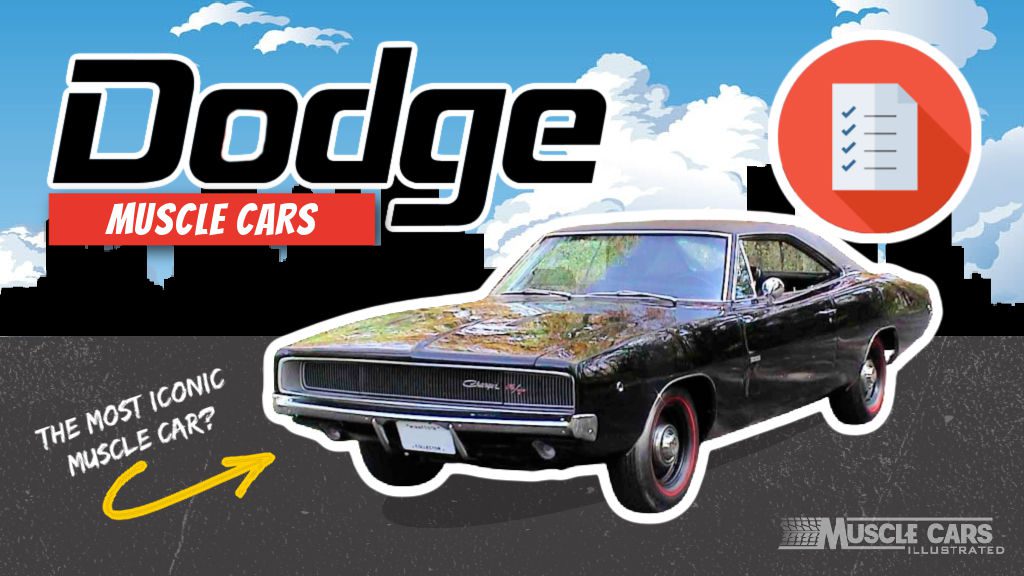
When it comes to old-school muscle cars, Dodge muscle cars are arguably some of the most iconic from the muscle car era.
Dodge produced several historic muscle car models across its A-body, B-body, and E-Body platforms, from the Dart to the Challenger to the Super Bee.
Dodge had a knack for distinguishing from high-performance colors to radical engines, pistol grip shifters, and its memorable model names.
In today’s article, I will list all of the Dodge Muscle Cars from 1964 to 1974 and provide an overview of each legendary muscle car model.
Let’s look at the ultimate list of Muscle Cars from Dodge, shall we??
Table of Contents
Dodge Muscle Cars
Dodge Charger
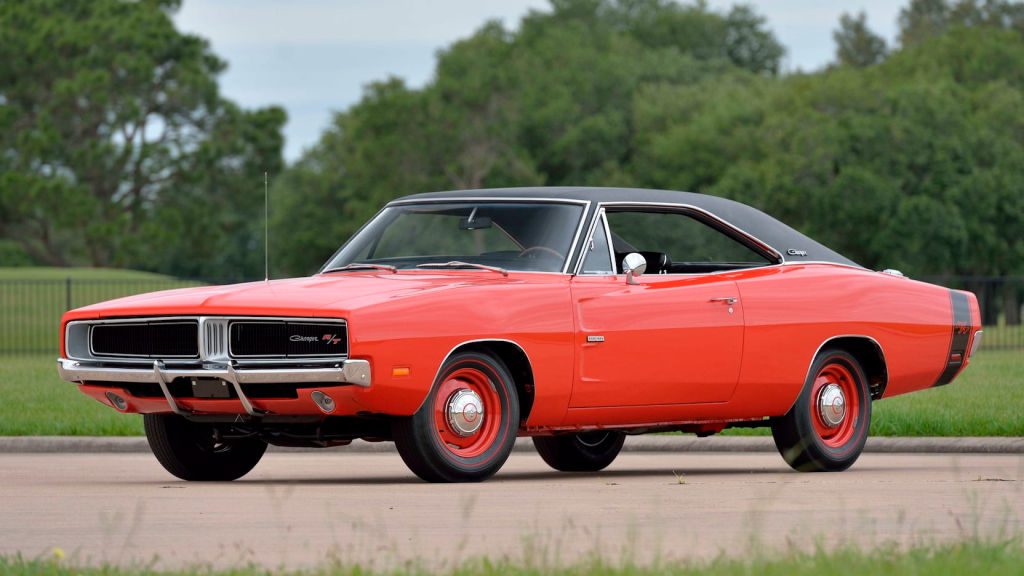
The first-generation Charger (1966-1967), second-generation (1968-1970), and third-generation (1971-1974) all leveraged the midsized B-Body platform.
In 1967, the Charger R/T package debuted, while the Charger 50 arrived two years later in 1969. Ever since, it has become one of the most popular Dodge muscle cars ever made.
The first generation started as a two-door fastback body design. Due to lower-than-expected sales, the 1968 model year saw many cosmetic improvements, including a curvy notchback style.
The second-gen, introduced in 1968, was sleeker and more streamlined than its predecessor, helping overall boost sales of the Charger.
Adding to the demand for the second-gen models long after its release, a 1969 Dodge Charger R/T known as the General Lee Car appeared on the Dukes of Hazzard television series from 1979 to 1985.
In 1971, the third-gen Charger transitioned to Fuselage Styling, incorporating rounder body panels and an extended front end. While distinctive and appealing to some, it wasn’t well-received by all.
In 1972, a coupe and hardtop model was available on the Charger Rallye, with the largest V-8 option being the U code 440 CID. Starting in 1973, all Chargers were hardtop models.
Several trim and option packages were still offered, with various small blocks and big block options available for order.
Depending on the year, the performance V-8 engine options included the 340, 383, 440, 440 Six Pack, and 426 Hemi.
| Year | Model | Production Numbers |
|---|---|---|
| 1966 | Charger (All) | 37,344 |
| 1967 | Charger (All) | 15,788 |
| 1968 | Charger R/T | 17,584 |
| 1969 | Charger 500 | 393 |
| 1969 | Charger R/T | 18,776 |
| 1970 | Charger R/T | 9,370 |
| 1971 | Charger R/T | 2,745 |
| 1971 | Charger Super Bee | 4,325 |
| 1972 | Charger Rallye | 3,791 |
| 1973 | Charger Rallye | 6,013 |
| 1974 | Charger Rallye | N/A |
Dodge Challenger
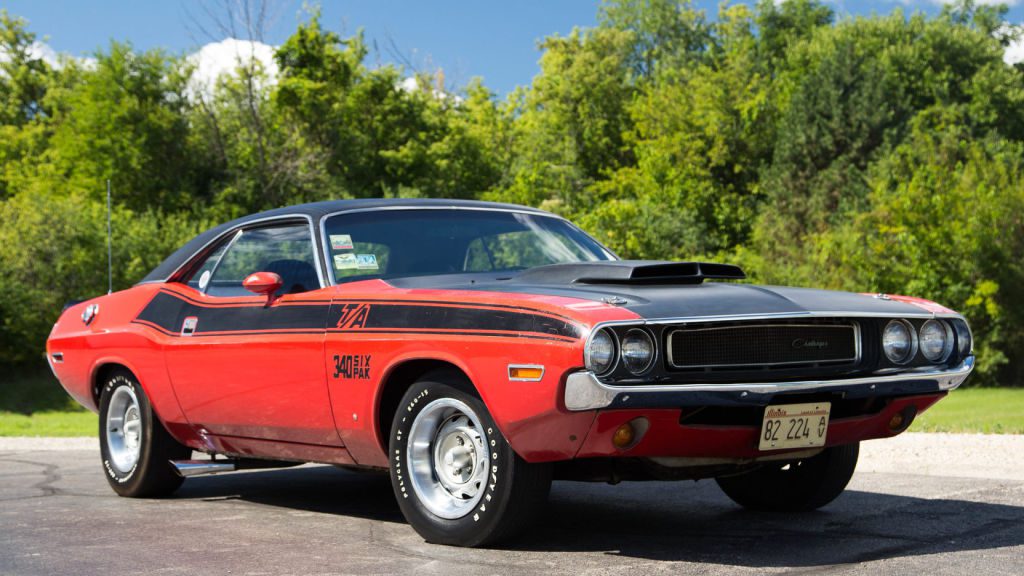
Built on the compact E-Body platform, the first generation Dodge Challenger existed from 1970 to 1974.
The Challenger model was first introduced in the fall of 1969 to face off against other pony cars like the Mercury Cougar and Pontiac Firebird.
From 1970 to 1971, various trim and option levels were available, with different small-block or big-block options on the menu.
During this period, there was a base or performance Challenger R/T model. The one-year-only 1970 Dodge Challenger T/A 340 Six Pack option was a Trans Am racing homologation car.
In 1970, a 2-door hardtop, special edition hardtop, or convertible was available. In 1971, only a hardtop model and convertible were available. From 1972 to 1974, only a hardtop model remained.
The Vanishing Point Car was a 1970 Challenger R/T that made its mark after appearing in the motion picture “The Vanishing Point” (1971).
From 1972 to 1974, few trim and option levels remained, with only small-block engine options on the menu. In 1972, the Rallye model absorbed the R/T model until the model ended in 1974.
| Year | Model | Production Numbers |
|---|---|---|
| 1970 | Challenger R/T | 18,359 |
| 1970 | Challenger TA | 2,400 |
| 1971 | Challenger R/T | 3,903 |
| 1972 | Challenger Rallye | 8,128 |
| 1973 | Challenger (All Models) | 32,596 |
| 1974 | Challenger (All Models) | 16,437 |
Dodge Coronet
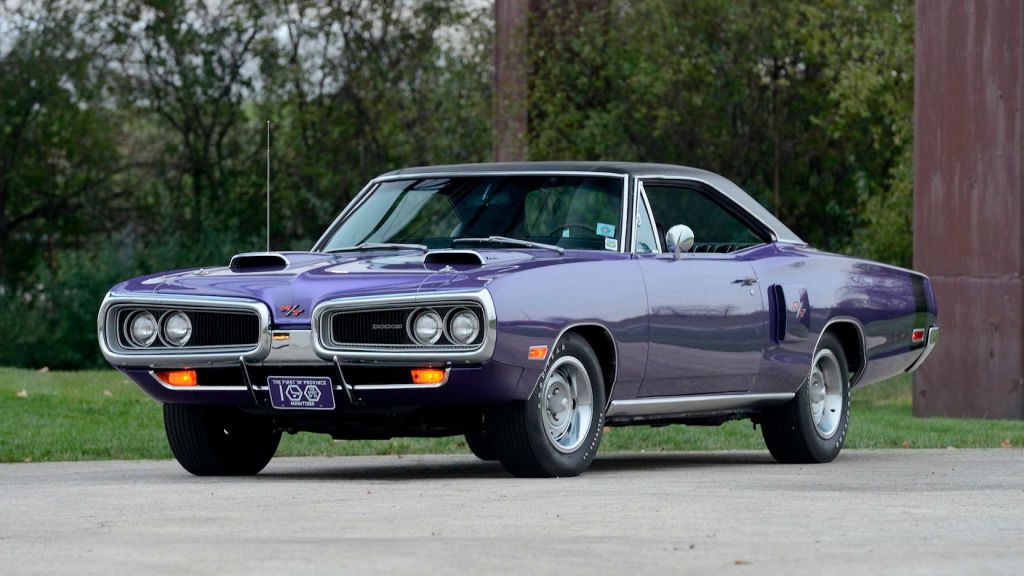
Built on the midsized B-Body platform, the 2-door Coronet was available in various trim levels from 1966-1970, including the sedan, deluxe, 440, 500, Super Bee, and R/T.
The Coronet was available as a hardtop or convertible, with a 383, 440, 440 Six Pack, and 426 Hemi available, depending on the year. The Coronet is arguably one of the most underrated Dodge Muscle Cars.
While not as popular as the Super Bee and Charger RT, the Coronet held its own in the Dodge Muscle Car lineup as a performance contender.
In 1971, the Coronet became a 4-door sedan and station wagon platform, so all 2-door models, including the Coronet R/T, were retired. Only the Super Bee survived after transplanting to the Charger model.
| Year | Model | Production Numbers |
|---|---|---|
| 1965 | Coronet 426S | 2,177 |
| 1966 | Coronet (Hemi) | 1,206 |
| 1967 | Coronet R/T | 10,305 |
| 1968 | Coronet R/T | 10,481 |
| 1969 | Coronet R/T | 6,874 |
| 1970 | Coronet R/T | 2,391 |
Dodge Dart
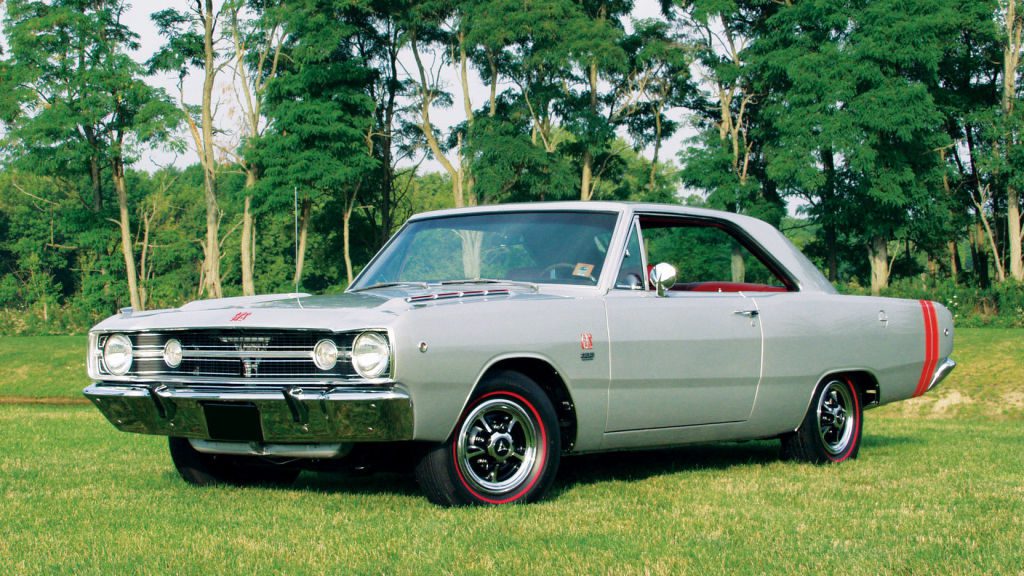
Built on the A-Body platform, the Dart was available from 1963-1974 in several trim levels, including the Demon, GT, GTS, Swinger 340, and Sport, depending on the year.
Depending on the year, three high-performance small-block V-8 engine options were available, including a 273, 340, 360, and one big block 383 CID V-8.
Up until 1967, only V-6 and small-block V-8 engines accompanied a Dart GT. However, from 1967-1969, the GTS option upgraded the boxy Dart GT with a big block high-performance 383 CID V-8.
From 1969-1970, the low bench seat trim Dart Swinger 340 came standard with a high revving 340 CID V-8, dual exhaust, Rallye suspension, heavy-duty limited-slip 3.23 rear gear, and choice of 4-speed manual or 3-speed automatic transmission.
In 1971, Dodge spawned the hellacious Demon. This curvacious budget racer was the answer to the Plymouth Duster. Due to religious group pressure, the Demon nameplate only lasted two years, ending in 1972.
The one-year-only Dart Sport 340 appeared in 1973, powered by a 340 CID V-8. In 1974, Dodge dropped the Sport model but picked up 20 more cubic inches with the Dart 360.
| Year | Model | Production Numbers |
|---|---|---|
| 1967 | Dart GT | 38,225 |
| 1967 | Dart GTS | 457 |
| 1968 | Dart GTS | 8,202 |
| 1969 | Dart GTS | 5,902 |
| 1969 | Dart Swinger 340 | 16,637 |
| 1970 | Dart Swinger 340 | 10,382 |
| 1971 | Dart Demon 340 | 7,981 |
| 1972 | Dart Demon 340 | 10,222 |
| 1973 | Dart Sport 340 | 11,315 |
| 1974 | Dart 360 | 3,879 |
Dodge Charger Daytona
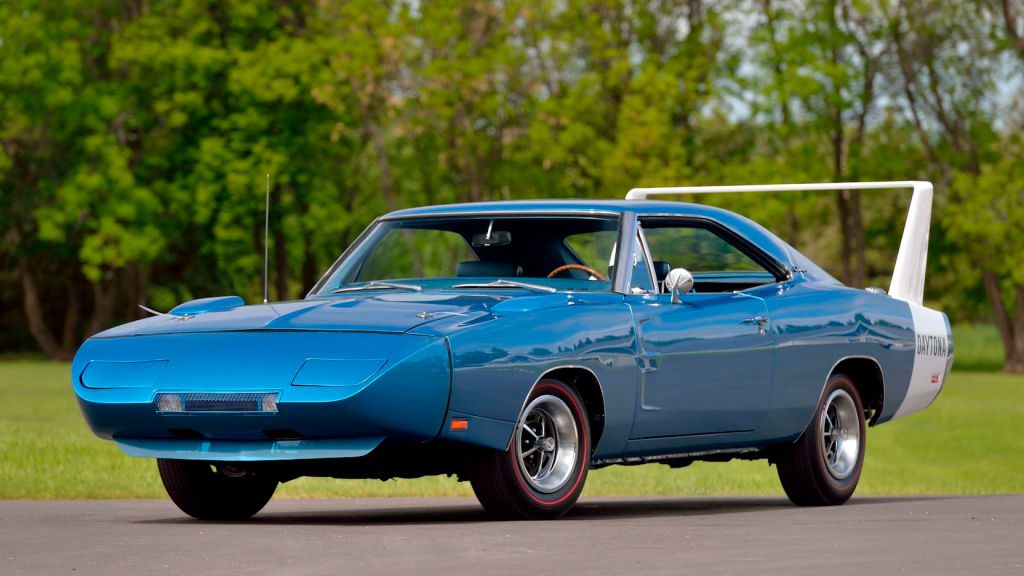
A one-year-only option on the B-Body platform, the 1969 Dodge Charger Daytona was built solely to win influential NASCAR races.
In 1968, two specific events created the unorthodox Aerocar known as the 1969 Dodge Charger Daytona, recognized as one of the most iconic Dodge muscle cars.
First, Dodge’s limited-edition Dodge Charger 500 failed to win NASCAR. Second, Richard Petty left Plymouth to race for Ford Motor Company.
Not wanting to leave anything to chance, Dodge leveraged aerodynamics and wind tunnels as their secret weapon to help claim victory.
And win, they did.
In the fall of 1969, the Daytona won first place in its first outing at the inaugural Talladega 500 held at Alabama International Motor Superspeedway located just north of Talladega, Alabama.
At its core, the Daytona was a modified 1969 Dodge Charger R/T with heavy-duty brakes, suspension, and special body enhancements to reduce wind resistance.
Two of the most distinctive enhancements included a 23-inch tall stabilizing wing mounted to the top of the rear decklid and a unique wedge-shaped steel nose cone that directed air over the car.
The aerodynamic upgrades didn’t end there. The Daytona also leveraged a flush rear window, special front fenders and hood, stainless steel A-pillar covers, and cooling scoops mounted on top of the front fenders.
The Daytona leveraged all the same V-8 engines found in the Charger R/T, including the 440 Magnum rated at 390 horsepower, and a 426 Hemi engine, rated at 425 horsepower.
Thanks to the aerodynamics and powerful engine, Buddy Baker became the first driver to reach 200 miles per hour in NASCAR history.
The Dodge Daytona was a short-lived Winged Warrior but won two races in 1969 and four more the following year.
In 1970, Chrysler transplanted the nose cone and spoiler onto a Road Runner model known as the Plymouth Super Bird. The Super Bird went on to win eight races in 1970.
| Year | Model | Production Numbers |
|---|---|---|
| 1969 | Daytona | 503 |
Dodge Demon
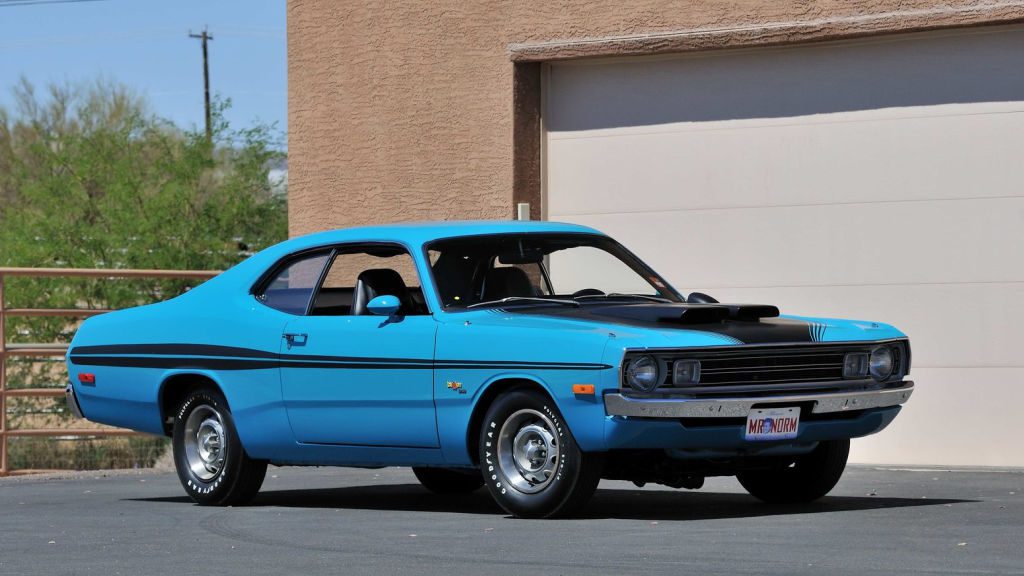
A two-year-only option built on the Dart A-Body platform, the lightweight Demon Sport Coupe was produced from 1971-1972.
Positioned as a budget car with style, the Dart Demon replaced the Dart Swinger model and was essentially a Duster with Dart front fenders.
For roughly $2,800, a Demon 340 was an affordable low-budget pavement pounder that delivered sporty looks with tire melting power.
A Demon 340 came standard with body side stripes, rear deck panel decals, dual exhaust, chrome tips, 3-speed manual transmission, 3.23 rear gears, Rallye suspension, 14″ Rallye wheels, and heavy-duty brakes.
The two V-8 small block LA engine options available included an economy 318 and a high-performance 340 rated at 275 horsepower. Out of the box, a Demon 340 was capable of mid-14-second quarter-mile passes.
In 1973, the Demon became the “Dart Sport” in response to intense pressure from Christian groups who objected to the “Demon” name logo that featured a cartoon Devil holding a trident.
| Year | Model | Production Numbers |
|---|---|---|
| 1971 | Demon 340 | 7,981 |
| 1972 | Demon 340 | 10,222 |
Dodge Polara
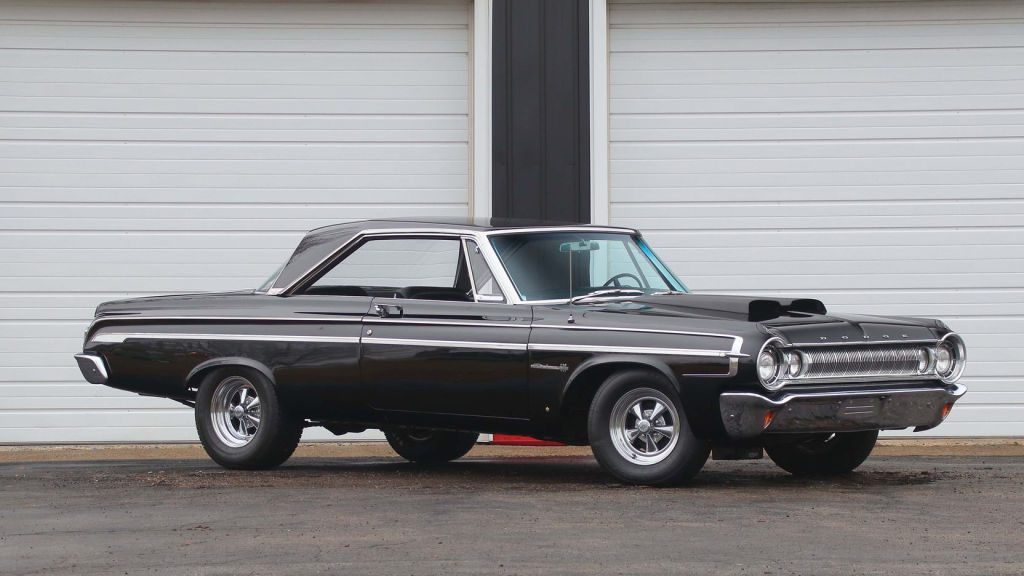
The Dodge Polara certainly doesn’t get talked about a lot but did play an important role in developing Dodge Muscle Cars—particularly with the 426 CID V-8.
In 1964, a 426 Street Wedge with 10.3:1 compression, 365 horsepower, and 470 lb-ft torque was available in various trim levels, including the 330, 440, Polara, and Polara 500.
In Car Life magazine’s March 1964 issue, a 426S equipped Polara 500 ran a 15.2-second quarter-mile, traveling at 89 miles per hour—making it the fourth-fastest muscle car of 1964.
| Year | Model | Production Numbers |
|---|---|---|
| 1964 | Polara 500 (All) | 17,787 |
Dodge Super Bee
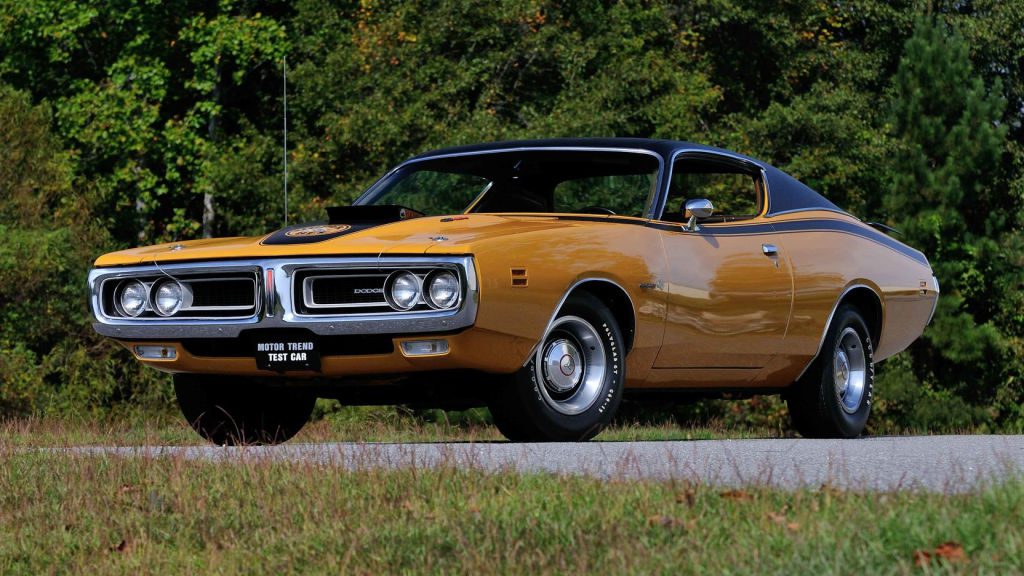
Built on the midsized B-Body platform from 1968-1971, the Dodge Super Bee was a budget muscle car inspired by the success of the economical Plymouth Road Runner supercar.
The Super Bee started life leveraging the 2-door Coronet coupe and hardtop from 1968-1970. In 1971, the Super Bee jumped over to the Charger when the Coronet became an exclusive 4-door only model.
In 1968, a Super Bee was only available as a hardtop or coupe, while from 1969-1970, as a pillared coupe, hardtop, and convertible. In 1971, Dodge only produced a hardtop model.
A big block powered the Super Bee from 1968-1970, with a small block 340 entering the lineup in 1971—same as the Road Runner.
In 1969, Dodge released the one-year-only A12 package mid-year on the Super Bee, including a 440 with 3x2bbl carburetors, fiberglass liftoff hood with hood pins, heavy-duty suspension, and 15″ steel wheels without center caps.
The 440 Six Pack continued in 1970 on both the Super Bee and Coronet R/T but not as the A12 package like in 1969.
In 1972, the Super Bee model name was officially retired and folded into the newly introduced Changer “Rallye” model.
| Year | Model | Production Numbers |
|---|---|---|
| 1968 | Coronet Super Bee | 7,841 |
| 1969 | Coronet Super Bee | 24,087 |
| 1969 1/2 | Coronet Super Bee Six Pack | 1,907 |
| 1970 | Coronet Super Bee | 14,139 |
| 1971 | Charger Super Bee | 4,325 |
Take Our Poll!
Well, there you have the ultimate list of Dodge Muscle Cars. Be sure to subscribe to see more content like this!

Ryan Wheaton
Ryan has owned muscle cars since 1986 and currently owns a 1972 Dodge Charger Rallye. He combines passion and experience to create engaging content for fellow muscle car enthusiasts. In 2018, he founded Muscle Cars Illustrated, authoring hundreds of articles on tips, history, and trends in the muscle car industry. He attends national car shows, auctions, and museums to stay current with the latest developments in the muscle car industry.
